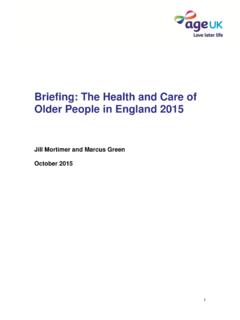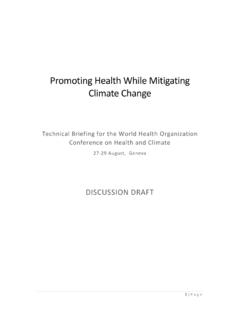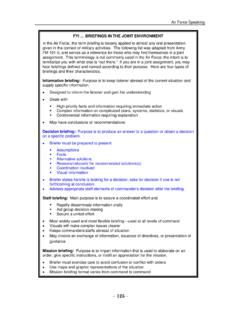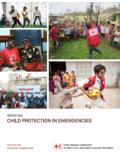Transcription of OECD Health Statistics 2014 How does Indonesia …
1 1 OECD Health Statistics 2014 How does Indonesia compare? Total Health spending accounted for only of GDP in Indonesia in 2012, three times less than the OECD average of Health spending as a share of GDP among OECD countries is highest in the United States, which spent of its GDP on Health in 2012. Health expenditure as a share of GDP, Indonesia and OECD countries, 2012 or latest year GDP1. Total expenditure excluding capital : OECD Health Statistics 2014 ; WHO Global Health Expenditure Database Health spending tends to rise with incomes, and generally countries with higher GDP per capita also tend to spend more on Health .
2 It is not surprising, therefore, that Indonesia ranks well below the OECD average in terms of Health expenditure per capita, with spending of only USD 150 in 2012 (adjusted for purchasing power parity), compared with an OECD average of USD 3484. Health expenditure per capita, Indonesia and OECD countries, 2012 or latest year 8745614060805099489648114698460245784419 4288410639973890364935593536348432893209 3172299826672457240923042291210520771803 1577154014471048984150010002000300040005 0006000700080009000 PublicPrivateUS$ PPP per capitaSource: OECD Health Statistics 2014 ; WHO Global Health Expenditure Database 2 The public sector is the main source of Health funding in nearly all OECD countries.
3 In Indonesia , 40% of Health spending was funded by public sources in 2012, much lower than the average of 72% in OECD countries. Health care resources and activities With an estimated physicians per 1000 population in 2012, Indonesia had much fewer doctors per capita than the OECD average of Indonesia only had 1 nurse per 1000 population in 2012, also a much lower number than the OECD average ( nurses). There continues to be gaps in the vaccination rates of children in Indonesia : 64% only of children were vaccinated against diphtheria, tetanus and pertussis (DTP) in 2012, while the coverage rate was higher for measles at 80%.
4 This is lower than the coverage rate in most OECD countries which is close to 100%. Health status and risk factors Most countries have enjoyed large gains in life expectancy over the past decades, thanks to improvements in living conditions, public Health interventions and progress in medical care. Life expectancy at birth in Indonesia has increased by more than 25 years since 1960 to reach years in 2012, although it remains almost ten years lower than the OECD average ( years).
5 The infant mortality rate in Indonesia has fallen greatly over the past two decades, coming down from 62 deaths per 1000 live births in 1990 to 26 deaths in 2012. Nonetheless, it remains much higher than the OECD average of deaths per 1000 births. Tobacco smoking is a major risk factor for a number of causes of death including cardiovascular diseases and a range of cancers. Almost one-fourth (24%) of adults in Indonesia reported that they smoked every day in 2007, a rate that is slightly higher than the OECD average (21% in 2012).
6 More information on OECD Health Statistics 2014 is available at For more information on OECD's work on Indonesia , please visit

















